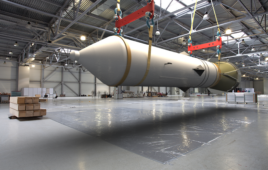Because of the proposed administration budget, NASA is scheduling more than 125 commercial satellite launches through 2010. Test facilities with large vacuum chambers that simulate the high-vacuum, high-solar radiation, and low-temperature conditions of space are in demand for ensuring the reliability of the antennas, satellites, communications gear and other equipment destined for operation in low orbit, high orbit, or outer space.
Critical to the operation of such vacuum chambers is the ability to deliver an absolutely leak-free means of transferring signals between the equipment being tested inside the chamber and the monitoring devices located outside of the chamber. Breaches would result in contamination and the expenses of cleaning and downtime. In some cases, those costs add up to over $100,000 per day.

From an engineering standpoint, getting signals into and out of the vacuum chamber with no leaks is only the starting point. It is the small details that could easily sidetrack a billion dollar project.
Connector specification can be broken down into two categories: old installations and new installations, and each pose their own challenges when specifying hermetic feedthroughs. Many of these older facilities have existing feedthrough apertures that must be altered for today’s digital test signals. Older facilities also need feedthrough replacements for worn, torn, or outdated configurations. Fittings that were considered “standard” two or three decades ago may no longer be available off the shelf today. New connections are also often needed for modern technology or if the old feedthroughs no longer meet project needs. Thus, there may be a need to retrofit a custom design into the existing assembly or into preexisting access holes in the system.
New installations call for feedthrough specification from the outset. In order to bench test the equipment before placing it inside the chamber, a variety of conductors are needed to penetrate the chamber bulkhead. PBTR connectors allow for easy connection, using the same fittings outside of the vacuum chamber for bench testing that are used inside of the vacuum chamber. This level of benchtop testing allows for a round of troubleshooting before placing the device in the chamber and pulling vacuum.
The ability to easily mate and unmate connections saves time and reduces the potential for excessive wear on the wiring installed in the chamber. Portplates are one product that can really cut the risk of leakage and simplify troubleshooting. By combining multiple feedthroughs on a single, pre-tested plate, Portplate assemblies reduce multiple leak paths to one.
Douglas Electrical Components
www.douglaselectrical.com
Filed Under: Aerospace + defense, Software • simulation





Tell Us What You Think!